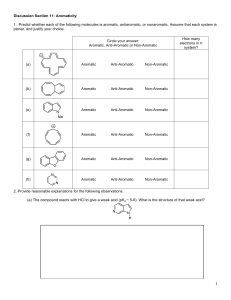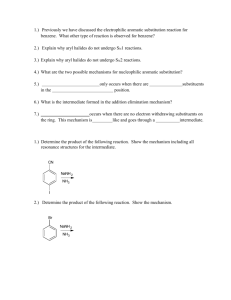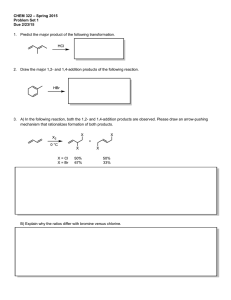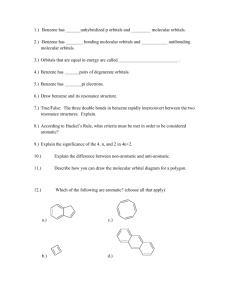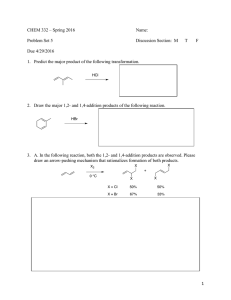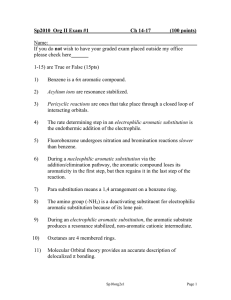CHEM 322. Midterm 1
advertisement
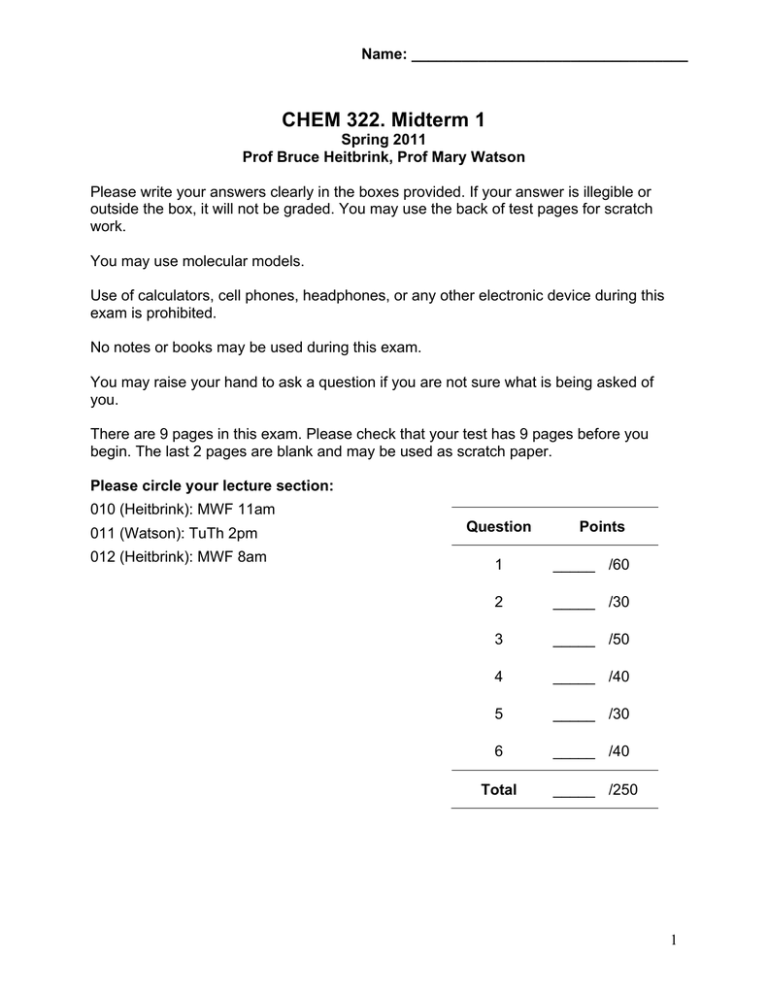
Name: _________________________________ CHEM 322. Midterm 1 Spring 2011 Prof Bruce Heitbrink, Prof Mary Watson Please write your answers clearly in the boxes provided. If your answer is illegible or outside the box, it will not be graded. You may use the back of test pages for scratch work. You may use molecular models. Use of calculators, cell phones, headphones, or any other electronic device during this exam is prohibited. No notes or books may be used during this exam. You may raise your hand to ask a question if you are not sure what is being asked of you. There are 9 pages in this exam. Please check that your test has 9 pages before you begin. The last 2 pages are blank and may be used as scratch paper. Please circle your lecture section: 010 (Heitbrink): MWF 11am 011 (Watson): TuTh 2pm 012 (Heitbrink): MWF 8am Question Points 1 _____ /60 2 _____ /30 3 _____ /50 4 _____ /40 5 _____ /30 6 _____ /40 Total _____ /250 1 Name: _________________________________ 1. (60 points) Are the following molecules aromatic, anti-aromatic, or non-aromatic? Assume each molecular is planar. Please circle your answer below. Please also list how many electrons are in the π system. No explanation is necessary. Circle your answer: Aromatic, Anti-Aromatic or Non-Aromatic (a) N N Aromatic Anti-Aromatic Non-Aromatic Aromatic Anti-Aromatic Non-Aromatic Aromatic Anti-Aromatic Non-Aromatic (d) Aromatic Anti-Aromatic Non-Aromatic (e) Aromatic Anti-Aromatic Non-Aromatic Aromatic Anti-Aromatic Non-Aromatic How many electrons in π system? N (b) (c) H B N (f) N H 2 Name: _________________________________ 2. (30 points) (a) Is cyclopropenyl anion aromatic? cyclopropenyl anion (b) Using a Frost circle, draw a molecular orbital diagram (also called an orbital energy diagram) for the π system of the cyclopropenium anion that explains your answer to part (a). You do not need to draw pictures of each molecular orbital. 3 Name: _________________________________ 3. (50 points) Please draw the expected major product for each of the following reactions. If no reaction is expected, write “No Reaction.” O (a) AlCl3 (cat.) O CH3 H3O+ (b) Δ SO3H O Me Cl (i) AlCl3 (stoich) H3C (c) OCH3 HO (ii) H2O Br2 (d) FeBr3 (cat.) H3CO2C H2N (e) KMnO4 CH3 4 Name: _________________________________ 4. (40 points) Provide reagents for the following transformations. In some cases, more than one step may be required. O CH3 CH3 (a) CH3 CH3 (b) SO3H CH3 CH3 Cl (c) CH3 SO3H (d) CH3 O 5 Name: _________________________________ 5. (30 points) Using your knowledge of electrophilic aromatic substitution and carbocations, please draw a reasonable arrow-pushing mechanism for the following reaction. NMe2 NMe2 CH3 + H2SO4 CH3 H3C CH CH3 3 6 Name: _________________________________ 6. (40 points) Provide a synthesis of the following molecule from benzene. You may use any inorganic reagents and any organic reagents with less than 3 carbons. CH3 CH3 7 Name: _________________________________ This page was intentionally left blank and may be used for scratch paper. 8 Name: _________________________________ This page was intentionally left blank and may be used for scratch paper. 9
